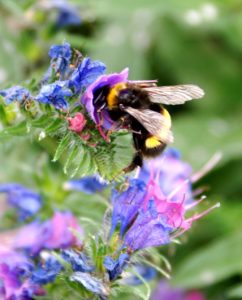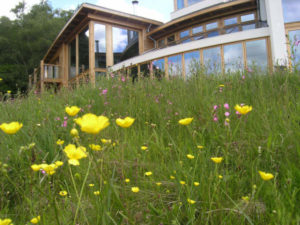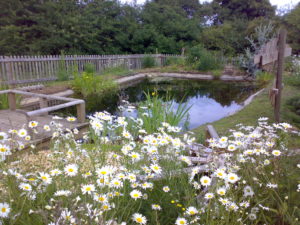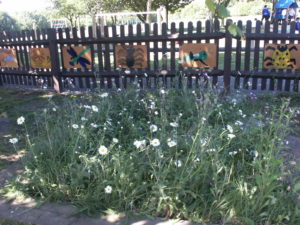What is biodiversity? – biodiversity describes the variety of life on Earth. It includes the wide variety of ecosystems and living organisms from all sources including terrestrial, marine and other aquatic ecosystems and their genes.

Why should we be concerned with biodiversity? – biodiversity is our key resource and support system. It is critical for the functioning of ecosystems which supply us with products and services, such as oxygen, food, fresh water, fertile soil, medicines, stable climate and recreation, sustaining human existence and our quality of life. Maintaining and enhancing biodiversity is a key challenge to sustainable development.
As part of a dissertation for a Garden Design Degree a Sparsholt student designed a simple survey, measuring attitudes towards biodiversity and wildflower meadows in general. It was concluded, that although documentation and general awareness of wildflower meadows and their importance for supporting biodiversity, would seem to be more common knowledge these days, the study did reveal that most people although were aware of the term, did not appreciate the importance they played on human society.
It is estimated that there are approximately 1 million ha of gardens within the UK, which equates to some 15 million gardens in Britain, (natural England, 2011). This means the potential for supporting wildlife is huge, with domestic gardens offering a tremendous opportunity to enhance the overall biodiversity. If only 1 percent of garden owners designate just a couple of square meters of their garden to becoming a wildflower meadow, it would help to ensure the sustainability of this ecologically vital habitat for future generations. This becomes even more important, when you consider that the UK has lost around 98% of its wildflower meadows.
Garden designers and landscape architects can promote biodiversity through incorporating wildflower meadows in their designs, for example. Thankfully this seems to be a growing trend within the sector, and long may it continue. This has the potential to increase the overall awareness of the general public, and professional sectors alike.

Although many school grounds are largely made up of hard landscaping, and make up about 5% of all the built-up areas within the UK, they can offer huge potential as a learning environment. Through focusing on the use of school grounds by creating for example, wildflower meadows, this could contribute to developing school grounds as bio-diverse resources. The inclusion of education for sustainable development, within the national curriculum, is becoming increasingly recognised as an important part of the delivery of subjects such as Science and Geography (islington.gov.uk). It is imperative to remember that most young people frequently experience the natural world for the first time, at an age when they are most receptive to what is around them. This is especially effective through the development of the ‘outdoor classroom,’ which provides beneficial experiences through the formal curriculum, by providing pleasant, and interactive surroundings, through which pupils can learn in a more relaxed and stimulating environment.
We have successfully supplied many schools with our Wildflower Turf, for example Overton Primary School, which can present opportunities for biodiversity projects such as bug surveys, mammal surveys and bird surveys, as well as the chance to observe these species in their natural environment. For the secondary schools these surveys on biodiversity could be more comprehensive, with potential for perhaps providing a variety of wildlife organisations with a steady pool of data.


Conclusion: By explaining the value of biodiversity and wildflower meadows, and why these concepts are important in the 21st century, it is hoped that many garden owners and schools will at least consider designating an area to develop into a wildflower meadow, especially if we are to facilitate in safeguarding biodiversity now, and in the future, for generations to come.
Please follow this link for factsheets and general information on biodiversity.